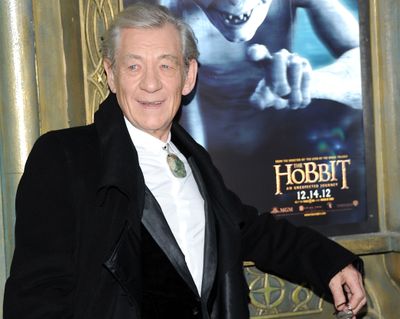Talking Tolkien: International Tolkien Reading Day is Thursday

Best known for “The Hobbit,” “The Lord of the Rings” and other works of high fantasy, John Ronald Reuel Tolkien was an English writer, poet, philologist and academic.
I vividly remember falling in love with J.R.R. Tolkien’s work while reading “The Lord of the Rings” trilogy for the first time in high school. It was a whirlwind of an experience, and, for almost an entire summer break, there was hardly anything but Middle Earth on my mind.
I don’t know exactly how many times I’ve watched Peter Jackson’s first trilogy all the way through, but, to give you an idea of my level of familiarity, when I rewatched the films (somewhat unnecessarily) leading up to writing this article, I found that I could still recite nearly every line of dialogue, even those in Elvish.
Knowing this, you might imagine how excited I am for “International Tolkien Reading Day” on Thursday. To help you get into the spirit, here is a by-no-means exhaustive list of his notable works, a few familiar and a few less so.
“The Hobbit”
Published in 1937, “The Hobbit,” or “There and Back Again,” was the first of many fictional works set in Tolkien’s “The Lord of the Rings” universe. The story follows Bilbo Baggins, the titular hobbit, on his reluctant quest to help a group of dwarves steal a lost treasure trove from under a dragon’s nose.
Baggins would’ve much preferred to stay home, but, when a wizard tells you to get up and go on a quest, you get up and go on a quest.
”Leaf by Niggle”
Between “The Hobbit” and “The Lord of the Rings” trilogy, Tolkien wrote and published several shorter works of fiction. “Leaf by Niggle,” first published in the Dublin Review and later in several short-story collections, tells the story of an artist living in a community that places no value on art.
Niggle, on the other hand, places great value on his art, setting almost all his other responsibilities aside to work on an elaborate and obsessively detailed painting of a tree. Eventually, when other worldly obstacles prevent him from painting, Niggle is forced to reassess as he begins a new journey.
“The Lay of Aotrou and Itroun”
Tolkien also wrote a great deal of poetry throughout his career. “The Lay of Aotrou and Itroun,” first published in the Welsh Review in 1945, is a poem of 508 lines modeled on the “Breton lay,” a genre of poem popular in 12th century Middle English literature.
The “Autrou” (lord) and “Itroun” (lady) of the title point toward the poem’s exploration of the institution of marriage, the conflict between heroic and chivalric values and the relationship between the two.
“Farmer Giles of Ham”
Another adventure into children’s literature, this comic medieval fable follows the titular character after he accidentally saves his village from a blundering giant. Suddenly considered a hero by all, farmer Giles finds himself between a rock and a hard place when a dragon comes to town, and the villagers expect him to deal with it.
But after all the king’s etiquette-obsessed knights prove useless, Giles rises to the occasion and saves the day.
“The Homecoming of Beorhtnoth Beorhthelm’s Son”
Inspired by an Old English poem titled “The Battle of Maldon,” this play follows a pair of characters, Tidwald (Tida) and Torhthelm (Totta), as they work to recover the body of their lord, Beorhtnoth, after his death on the battlefield at Maldon.
The pair find Beorhtnoth’s body fairly quickly, but the focus of the story shifts when the two stumble across a battlefield looter. In a rage, Totta kills the looter. Tida chastises him, and the two begin to argue the justice of the war as a whole.
“The Lord of the Rings”
Published in three volumes – “The Fellowship of the Ring,” “The Two Towers” and “The Return of the King” – “The Lord of the Rings” is Tolkien’s most popular work. The trilogy follows four hobbits, two men, an elf, a dwarf and a wizard on their quest to destroy a ring with the power to cover the world in darkness.
“The road goes ever on and on,” and though the journey is an arduous and costly one, their fellowship remains, carrying them through to “the end of all things.”